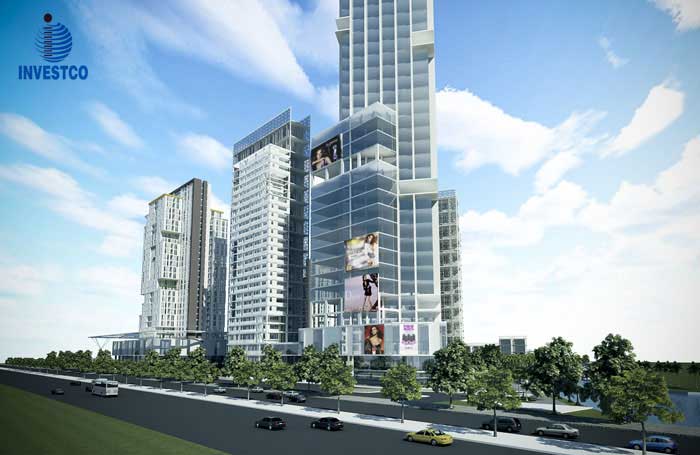The thaw in Hanoi’s real estate market is seeing greater interest in villas and townhouses.
Sales of villas and townhouses in Hanoi are especially bright points amid increasing interest in real estate investment.

The first quarter report from leading property consultants Savills Vietnam shows that both sale prices and the number of deals in the segment are on the rise. “Prices are increasing in the villa and townhouse segment in Hanoi, with many sale deals going through, according to our figures,” said Mr Tran Nhu Trung, Associate Director of Savills Vietnam. “This is a highlight of Hanoi’s property market.”
Asking prices for villas and townhouses are increasing, with numerous sales being conducted in the first quarter. Specifically, the highest asking price is in villas in Cau Giay district, at $9,200 per square metre, with the lowest being in Me Linh district, at $800 per square metre. Villas and townhouses in Long Bien, Hoang Mai and Gia Lam districts increased 20 per cent and 15 per cent against those in the previous quarter.
The increases continued the market trend in the segment from the last quarter of 2010. According to the Q4 2010 report from CBRE, another major property services company, the asking price of villas and townhouses increased 12 to 25 per cent in October - December.
The development of infrastructure is given as a reason for the increase in investor interest and asking prices. The largest infrastructure project is the VND72 trillion ($3.4 billion) invested in the No 4 ring road, surrounding Hanoi’s outskirts at a length of 136 km. Many other smaller roads and bridges connecting the city centre and the outskirts are also being built. According to Mr Richard Leech, Executive Director of CBRE, convenient transport infrastructure in some areas has pushed up property values.
The main buyers of these products are the wealthy, who primarily buy for investment than for living. In the short term, many villas and townhouses are purchased then left vacant because the owners have not yet found subsequent buyers and never intend to live there. The Prime Minister recently asked the Hanoi People’s Committee to address the fact that hundreds of millions of dollars worth of villas in Hanoi have been left unfinished for a number of years.
Investors in the segment see potentially good sales in the mid and long terms. Many upper-middle income earners in Hanoi and other provinces consider the purchase of villas and townhouses in the suburbs to be comparable in the mid-term to apartments in the city, as infrastructure is developing quickly. The number of people making up these groups is expected to increase along with general economic growth.
For instance, the average asking price for an apartment in Dong Da district is more than $2,000 per square metre, or about equal to the price of a villa in Gia Lam district. People working in Hoan Kiem district, the busiest area in Hanoi, need a longer time to travel from Dong Da than from Gia Lam, with the increasing frequency of traffic jams in the city centre.
Although social infrastructure in the suburbs, like hospitals, schools and entertainment, cannot match those found in the city centre, the quality of the natural environment is clearly much better.
According to an analyst from the Archi Group, overloaded infrastructure in the city centre, illustrated by pollution and traffic congestion, are making many people seek a better living environment in the suburbs. “Also, as the government is planning to move administrative offices and universities to the city’s outskirts, upper-middle income earners are looking for housing nearby,” he said.
People in the north of Vietnam generally prefer to own land rather than apartments. Recent accidents relating to poor construction quality, like fire prevention measures, in new apartment buildings and the earthquake in Japan have reinforce the preference.
But Mr Trung from Savills Vietnam pointed out that investment in villas and townhouses are unlikely to become the mainstream in Hanoi’s real estate market because land supply is limited. “There is a dearth of land in Hanoi available for housing projects and there is a limit on the percentage of the land area in a housing project that is spared for villa and townhouse development,” he explained. “Although many people prefer to invest in this segment, the land stock is not sufficiently large to make such investment the common trend.”
Savills Vietnam is yet mark the investment cycle of the villa and townhouse segment in Hanoi, as it has done already with the prime property segment in various cities around the world. “There are so many external or informal factors affecting or distorting this market segment,” Mr Trung said.
More interest in property
A recent survey by VnExpress, a local media organisation, on the focus of investors in different types of investment showed that real estate receives the greatest interest. This matches the opinions of several property analysts, that property is increasingly seen as a safer and more attractive investment channel in the existing circumstances of high inflation and fewer investment options.
Savills pointed out that some 43 per cent of surveyed investors consider property as their leading investment interest, up from 24 per cent prior to April 1 when the government’s monetary tightening measures were yet to be fully implemented. Meanwhile, interest in investment in gold, forex and securities are on the decline.
According to Ms Le Thi Lan Anh, Deputy Chairman of Hanoi Real Estate Club, as forex, gold and securities are heading downwards, investors are clearly shifting their money to property. “Land in several outlying areas, such as Thach That and Quoc Oai, are selling quickly,” she said. “Whatever is ready for sale is sold.”











